Nail fungus is a stubborn problem that turns nails yellow, thick, and brittle, and unfortunately, regular treatments often don't work well. Red light therapy offers a pain-free solution that shines specific light wavelengths onto infected nails to kill fungus while boosting your body's natural healing abilities. Unlike harsh medications, this gentle treatment fights infection, helps grow healthier nails, and improves blood flow to the affected area without unpleasant side effects. For anyone tired of hiding their feet, red light therapy combined with good prevention habits might finally solve this frustrating problem.

What Is Nail Fungus and Why Is It So Hard to Treat?
Nail fungus, medically known as onychomycosis, is a common infection that affects approximately 10% of adults worldwide. This condition occurs when fungi invade the nail bed, gradually spreading through the nail tissue and causing a range of uncomfortable symptoms. Understanding the basics of nail fungus—from its causes to why it's so persistent—is essential for effectively approaching treatment options like red light therapy.
Common Fungi That Infect Nails
Nail infections are primarily caused by dermatophytes, a group of fungi that feed on keratin, the protein that makes up your nails. The most common culprit is Trichophyton rubrum, responsible for about 90% of toenail infections. Other fungi like Candida (yeast) and non-dermatophyte molds can also infect nails, particularly in people with weakened immune systems.
- Where They Thrive: These fungi love warm, moist places. That's why they're commonly found in swimming pools, gym showers, saunas, and inside sweaty shoes or socks worn for long periods.
- How They Get In: The fungi enter through tiny cuts in the skin around your nail or small gaps between your nail and nail bed. Once inside, they spread throughout the nail, causing infection.
Signs You Have a Nail Infection
Early recognition of nail fungal infection symptoms is crucial for successful treatment outcomes. Here are the progressive signs to watch for:
- Nail Color Changes: The first noticeable sign is usually the yellowing of the nail. As the infection worsens, the color may change to brown, green, or even black depending on the type of fungus.
- Thick, Misshapen Nails: Infected nails become thicker and may change shape. This can make them hard to trim and uncomfortable when wearing shoes.
- Crumbly Texture: As the infection progresses, nails become brittle and may crumble or break easily. You might notice debris collecting under the nail.
- Nail Separation and Odor: In advanced cases, the nail may lift away from the skin underneath (called the nail bed) and sometimes develop an unpleasant smell due to bacteria growing in the damaged area.
- Look-alike Conditions: Not all nail problems are caused by fungus. Conditions like psoriasis can look similar, which is why it's important to get a proper diagnosis before starting treatment.
Why Traditional Treatments Often Fail
Nail fungal infections are notoriously difficult to treat for several practical reasons:
- Hard-to-Reach Infection: The nail itself acts as a shield, making it difficult for medications to penetrate and reach the fungi hiding underneath. It's like trying to treat something behind a protective barrier.
- Fungal Fortresses: Fungi build protective shields called biofilms that help them resist medications, similar to how bacteria develop resistance to antibiotics.
- Slow Nail Growth: Toenails take 12-18 months to grow out completely. Even after killing the fungus, the damaged nail appearance remains until the nail fully regrows, which can be discouraging.
- Treatment Drawbacks: Oral medications can harm the liver and interact with other drugs, while topical treatments often can't penetrate deeply enough. Both approaches typically work in only 40-60% of cases.
- Giving Up Too Soon: Many people stop treatment because it takes so long (6-12 months) to see results or because of medication side effects. This allows the infection to return, creating a frustrating cycle.
How Red Light Therapy Works Against Nail Fungus
Since regular treatments for nail fungus often fail to penetrate the nail or cause unwanted side effects, many people look for better options. Red light therapy offers a promising solution that can reach deep into the infected nail without the problems of pills or creams.
What Is Red Light Therapy?
Red light therapy (RLT) uses special red light (630-660 nm) and near-infrared light (810-940 nm) to treat various health problems. The light comes from devices that range from small handheld units for home use to bigger systems in medical offices. Unlike UV light, which harms skin, red light passes safely through skin and nails without causing damage. Treatment usually involves shining the light on the infected nail for 15-20 minutes a few times each week. The light can get through the nail better than many creams, reaching where the fungus actually lives.
How Light Fights Fungus
Red light works against nail fungus in simple but effective ways. The light creates substances that break down the fungus walls and damage its vital parts, eventually killing it. At the same time, red light boosts energy production in your healthy cells, helping your body fight the infection naturally and heal faster. This process is selective – it hurts the fungus but leaves your own tissue unharmed and actually makes it stronger.
Safety Benefits of Light Treatment
Red light therapy offers several key safety advantages compared to traditional fungal treatments.
- No Liver Damage: Red light therapy doesn't stress your liver or interfere with other medications. This makes it safe for people taking multiple medications or those with existing health conditions, unlike oral antifungal pills, which can cause liver problems.
- Pain-Free Treatment: The procedure is completely painless. Most people only feel mild warmth during sessions, similar to sitting in gentle sunshine. There's no discomfort or recovery time needed.
- Virtually No Side Effects: Side effects are extremely rare with red light therapy. At most, some people experience slight temporary redness that quickly fades after treatment, unlike the potentially serious side effects of traditional medications.
- Safe for Long-Term Use: You can safely use red light therapy for extended periods without worrying about harmful effects. This makes it excellent for preventing fungal infections from returning, as consistent use doesn't lead to resistance or complications.
- Works Well With Other Treatments: Red light therapy can be safely combined with traditional antifungal treatments. Many doctors recommend using both approaches together to improve results while potentially reducing the need for high doses of medication.

Key Benefits of Using Red Light Therapy for Fungal Nails
Red light therapy possesses a number of key benefits in the treatment of nail fungus. Here's what you need to know about how this treatment helps:
Red Light Directly Fights Fungal Infection
Red light therapy actually kills the fungus in your infected nails. The light goes through your nail and forms oxygen compounds that kill fungal cells. Studies show that this can eliminate fungal colonies by 30-40% in a matter of weeks of regular use. In contrast to some drugs, which simply inhibit fresh fungal growth, red light therapy kills existing fungus. A few individuals notice fewer changes in nail color and thinning in 1-2 months as the infection resolves.
Faster Nail Healing and Growth
Red light helps in the recovery and regrowth of your nails, making them healthier and faster. Red light enhances energy production in cells where new nail growth occurs, speeding up the healthy growth of your nails to replace the infected area. Red light therapy has been proven to enhance nail growth rates by up to 20%. For the average individual, this means healthy nail regrowth in about 4-6 months instead of having to wait the usual 12-18 months for complete toenail replacement.
Better Blood Flow and Less Discomfort
Red light therapy improves blood flow and reduces soreness and swelling around infected nails. The light relaxes blood vessels, making more blood travel to your nails. This sends more oxygen and immune cells to fight the infection and reduces swelling. Better blood flow also helps any topical medication you're using to be more effective. Pain and pressure around most people's nails reduce by 2-3 weeks after treatment, allowing them to live more comfortably.
How to Effectively Apply Red Light Therapy for Nail Fungus
Now that the several benefits of red light therapy to remove nail fungus have become obvious, the subsequent key step is to be aware of how to effectively implement this therapy. The ultimate effectiveness depends upon executing the right procedure, adopting a routine frequency, and learning the right ways to combine it with other treatment protocols if and when needed. Below are a few tips to guide you on optimizing red light therapy for nail fungus eradication.
Steps for Preparing and Using Red Light Therapy
Proper preparation ensures you get the most from each red light therapy session. These simple steps help the light work effectively on your infected nails.
- Clean Your Nails: Wash your nails with mild soap and warm water, then dry them completely. Clean nails allow the light to penetrate better without barriers.
- File Gently If Needed: Consider lightly filing the infected nail with an emery board to help the light reach deeper—but never file so much that it hurts or bleeds.
- Position Correctly: Hold the light device directly over your nail at the right distance (usually 6 inches for home devices), keeping it steady the whole time.
- Protect Your Eyes: Wear the protective goggles that come with most devices, especially during longer treatments or when treating fingernails close to your face.
Treatment Times and Schedule
Most red light therapy treatments for nail fungus last between 15 and 20 minutes per session. Home devices typically require slightly longer sessions than professional equipment due to their lower power. For most infections, treatments should be done 2-3 times per week during the first month, then can often be reduced to 1-2 times weekly for maintenance.
Consistency matters more than intensity – regular, shorter sessions work better than occasional, long ones. You may not see visible improvement for the first 4-6 weeks, but most people notice changes within 2-3 months as a healthy nail grows in from the base. A complete treatment course usually lasts 3-6 months, though this varies based on how severe the infection is and how quickly your nails grow. Some people use less frequent maintenance sessions (once every 1-2 weeks) even after the infection clears to prevent it from coming back.
Combining Light Therapy with Other Treatments
Using red light therapy alongside traditional fungus treatments often leads to better results than either method alone. Here's the way to best use them in combination:
- Better Together: Red light therapy has no problem being combined with over-the-counter antifungal creams like Lamisil cream, Lotrimin solution, or prescription Jublia drops. The light increases blood flow to your nails so the medications can be absorbed deeper into the infection.
- Timing Your Treatments: Apply your antifungal products about 10-15 minutes after finishing your light therapy treatment. For example, following your red light treatment of your toenail, wait a little while before applying your Fungi-Nail topical solution to achieve maximum absorption.
- Safe with Oral Medications: If you are taking prescription pills like terbinafine (Lamisil) or itraconazole (Sporanox), it is safe to use red light therapy on the same day without causing any harmful interactions.
- Less Medication Needed: The majority of individuals find they can use less of powerful medications like ciclopirox nail lacquer or finish their course of oral terbinafine sooner when using it in conjunction with standard light therapy.
- Natural Combinations: Red light therapy may also be used in combination with natural therapies like tea tree oil, oregano oil, or vinegar soaks—apply these natural therapies after your light treatment for deeper penetration.
- Notify Your Doctor: Always tell your healthcare provider about using red light therapy, in addition to any prescribed treatments, so they can adjust your treatment plan if needed. Many dermatology clinics and podiatry centers now offer convenient combination packages featuring both professional light therapy sessions and prescription antifungal medication as a single treatment option.
Preventing Nail Fungus: Proactive Steps for Healthy Nails
While red light therapy effectively treats existing nail fungus, preventing infection or reinfection is equally important for long-term nail health. Even after successful treatment, fungal spores can remain in your environment or on your footwear, creating a risk for new infections. By combining good hygiene practices with nail-strengthening strategies, you can significantly reduce your chances of dealing with fungal nail infections in the future.
Daily Foot Care to Stop Fungal Growth
Creating an atmosphere where fungus cannot easily survive makes you your own best protection from nail infections. By adding the following daily routine, you will reduce your chance of acquiring new fungal problems considerably:
- Clean Feet Daily: Wash your feet daily in warm water with mild soap and spend a bit more time washing between your toes, where moisture and dead skin are prone to accumulate. This simple habit wipes out fungal spores before they can lead to an infection.
- Dry Completely: After washing, dry your feet thoroughly with a clean towel, paying special attention to the areas between toes. Fungal organisms love moisture, so removing dampness provides an unwelcome setting for their growth.
- Select Breathable Shoes: Pick socks from natural, breathable fabrics such as cotton, wool, or moisture-wicking materials specifically designed for this purpose instead of synthetic ones that retain sweat. Replace your socks at least once a day, and alternate between multiple pairs of shoes to enable each pair to dry completely between uses.
- Wear Shoes in Public Facilities: Always wear flip-flops or water shoes in swimming pools, in showers within the gym, and within locker rooms to create a barrier between your feet and surfaces that can be infected and where fungus likes to spread.
- Control Excess Sweat: For extremely sweaty-footed individuals, foot and inside shoe treatment with an antifungal powder or spray provides extra protection against the humid environment that fungi prefer. Apply moisture-wicking insoles in warm weather or for sports activities.
- Clip Nails Properly: Keep your nails neatly cut, clipping straight across so your nails do not develop ingrown edges that will serve as entrances for fungus. Utilize certain nail instruments not shared with other individuals to eliminate cross-contamination.
Building Stronger Nails to Resist Infection
Strong, healthy nails will naturally be better protected against fungal invasion than broken or weak nails. By keeping your nails healthy both from the inside and outside of your body, you create a strong defense system against infection:
- Nutrient-Dense Food Options: Emphasize the consumption of biotin-rich foods (eggs, nuts, whole grains), protein-rich foods (lean meat, fish, beans), and minerals like zinc (shellfish, legumes) and iron (green leafy foods). These act as building blocks on which your body will build strong nail keratin that resists infection naturally.
- Moisturize Cuticles: Moisturize your cuticles on a regular basis with natural oils such as jojoba or vitamin E to avoid cracking and splitting, which could provide openings for fungal penetration. Healthy cuticles create a vital protective shield that prevents fungus from reaching the nail bed.
- Steer Clear of Harsh Chemicals: Minimize exposure to harsh chemicals by wearing rubber gloves while cleaning, and avoid nail polish removers with acetone, which can dehydrate and weaken nails. While purchasing nail products, choose ones with "5-free" or "non-toxic" labels to prevent damage.
- Use Red Light Therapy: Monthly sessions of red light therapy stimulate circulation to the tissues around and the nail bed and encourage healthier, growing nails. Prevention treatments have been found to reduce reinfection by as much as 60%, according to studies with good hygiene, and these treatments include.
- Seasonally Adjusted Care: Ramp up your preventive measures in the summer months when heightened sweating and going barefoot may otherwise heighten your risk. Consider having more frequent light therapy sessions during times of heightened risk, like during sports seasons or humid weather.
- Maintain Nails Well Moisturized: Maintain nails well-hydrated by drinking enough water and using nail-specific moisturizers that penetrate the nail plate. Avoid the extremes of very dry or overly wet nails, as both can compromise nail integrity and increase infection susceptibility.
- Get Regular Check-ups: Have regular check-ups with a podiatrist or dermatologist if there is a history of fungal nails. These professionals can spot small changes in nail development before they become full-blown infections and offer prevention advice specific to your needs.
Start Red Light Therapy Now For Healthier, Fungus-Free Nails
Red light therapy is changing how we treat stubborn nail fungus, working where other treatments often fall short. It fights the infection directly while helping your body heal faster - a one-two punch against fungal nails. If you're tired of hiding your toes or dealing with thick, discolored nails, it's time to give this approach a try. You can use affordable home devices for mild cases or visit a professional for tougher infections. Talk to your doctor about adding red light therapy to your routine, especially if other treatments haven't worked well. With regular use and good nail care habits, you'll be on your way to clearer, healthier nails that you'll feel confident showing off. Don't wait - the sooner you start, the sooner you'll see results.



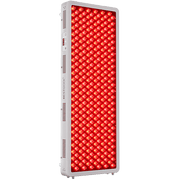










 Small
Small
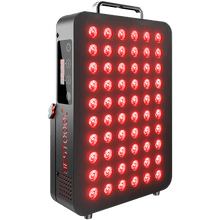
 Moderate
Moderate
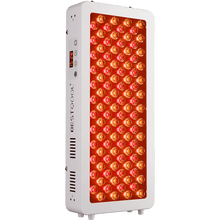
 Moderate
Moderate
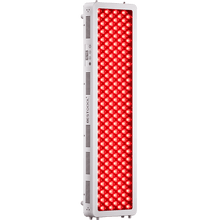
 Moderate
Moderate
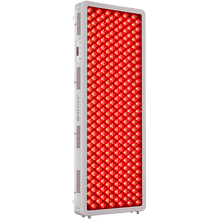
 Full
Full



